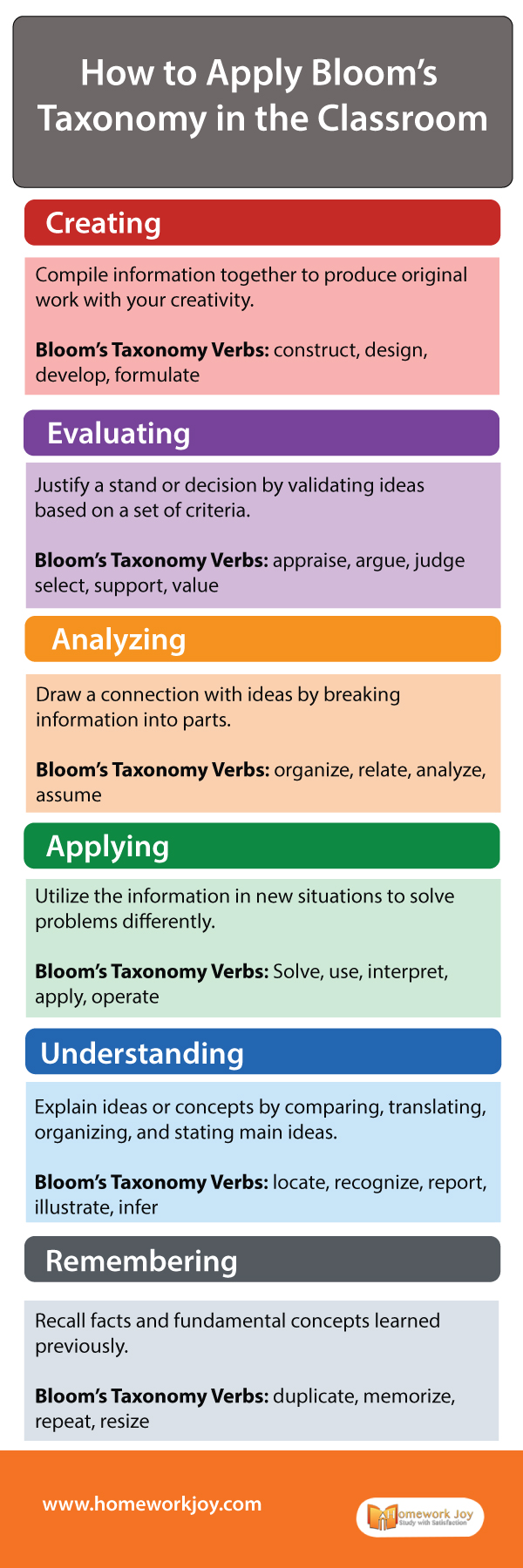Suppose to want to learn a subject better. Thus for that, you need to understand the topic inside and out. Also, you have to know why you are learning that subject and practicing it. These three aspects of learning that are thinking, feeling, and doing it can be developed by implementing Bloom’s Taxonomy to your lessons. So what is this Bloom’s Taxonomy, let’s explore more about it.
Also, read our latest posts:
How to Write a Journal Step by Step | Writing Tips
What is Bloom’s Taxonomy?
Benjamin Bloom was an American educational psychologist. His focus was on the mastery of learning, which further developed into what is known as Bloom’s Taxonomy. So it is a hierarchy of learning objectives.
The primary purpose of Bloom’s Taxonomy is to give educators a common language to talk about curriculum design and assessment. That is why today it is used by teachers all around the world.
Three-domains of Bloom’s Taxonomy
Bloom’s Taxonomy includes three-domain that reflects the type of learning we all do. Each has different levels of knowledge associated with the relevant action verbs. So the three domains are as follows:
Cognitive Domain
This domain is all about knowledge and mental skills. As the level moves up, critical thinking and experiencing becomes more complicated. So let’s look at the levels and Bloom’s taxonomy verbs in more detail.
Creating
Compile information together to produce original work with your creativity.
Bloom’s Taxonomy Verbs: construct, design, develop, formulate
Evaluating
Justify a stand or decision by validating ideas based on a set of criteria.
Bloom’s Taxonomy Verbs: appraise, argue, judge select, support, value
Analyzing
Draw a connection with ideas by breaking information into parts.
Bloom’s Taxonomy Verbs: organize, relate, analyze, assume
Applying
Utilize the information in new situations to solve problems differently.
Bloom’s Taxonomy Verbs: Solve, use, interpret, apply, operate
Understanding
Explain ideas or concepts by comparing, translating, organizing, and stating main ideas.
Bloom’s Taxonomy Verbs: locate, recognize, report, illustrate, infer
Remembering
Recall facts and fundamental concepts learned previously.
Bloom’s Taxonomy Verbs: duplicate, memorize, repeat, resize
Affective Domain
If the cognitive domain is all about mind, the affective domain is all about emotion and feeling.
Psychomotor Domain
Learning in the psychomotor domain is all about practical and physical skills.
Teachers use this tool in the planning process. So you can also create Bloom’s classroom poster for lesson planning and for finding the right verbs for learning intentions or objectives. If you need to know more, get instant online assignment help from us. Our tutors follow this technique for the better elaboration of topics.
